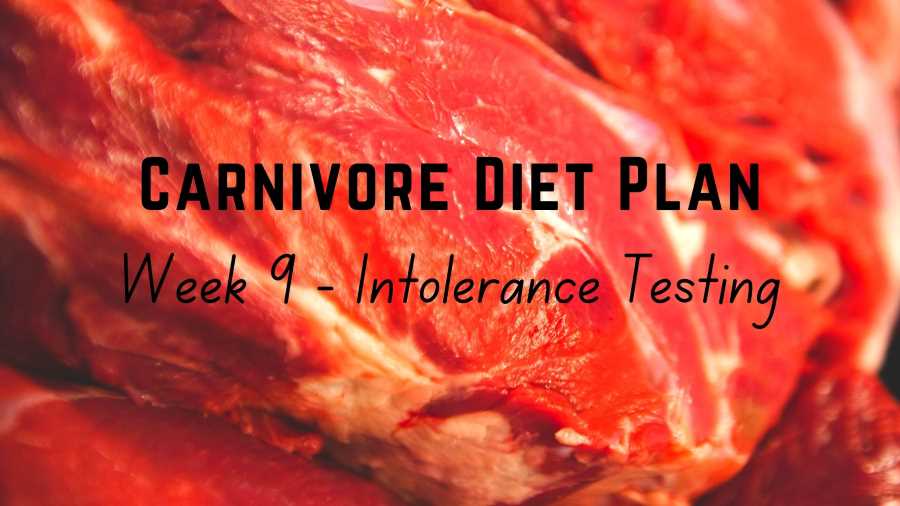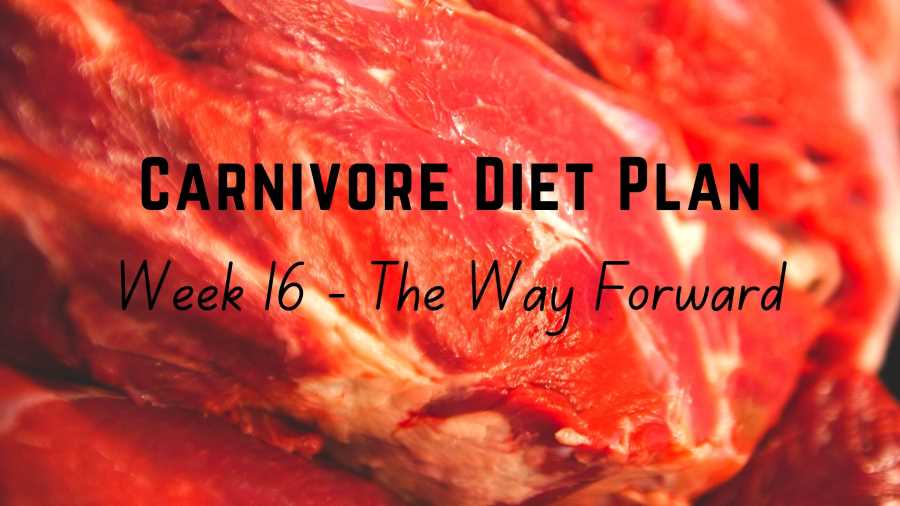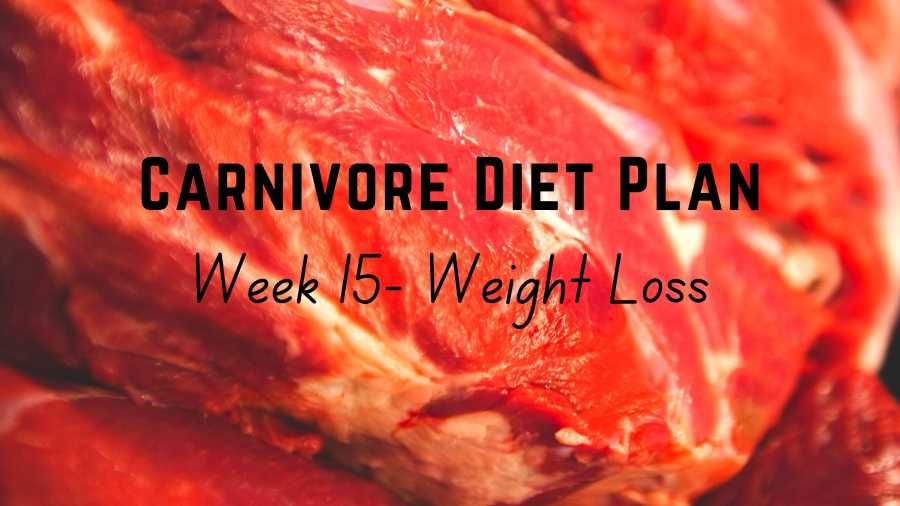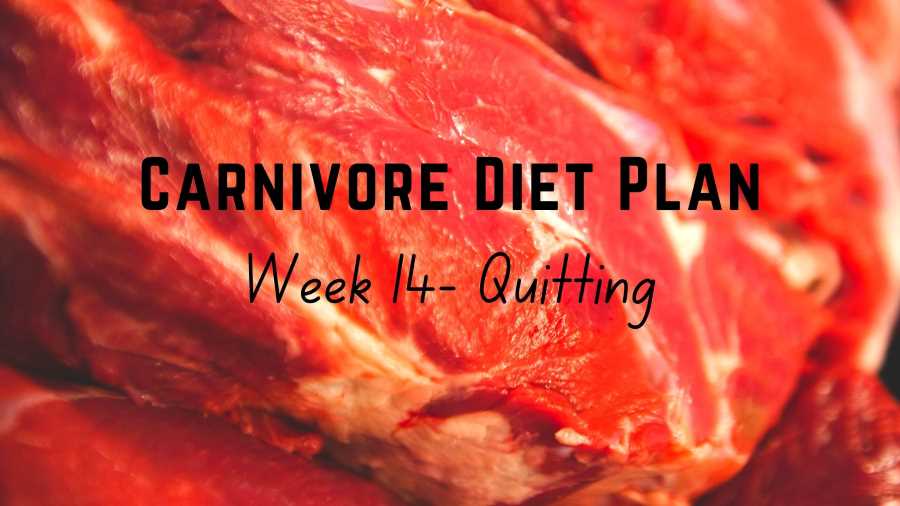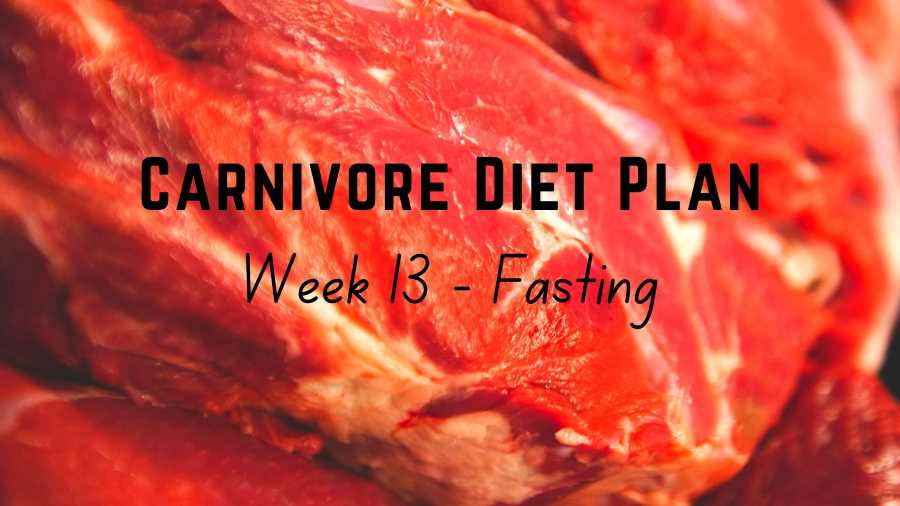Since the beginning of this plan, you’ve been eating only ruminant meat (beef, lamb, bison, goat, etc.) and organ meat (liver, marrow, brain, kidney, heart, etc.).
This week we will focus on testing other animal-based food such as eggs, pork, poultry, seafood, and dairy to see if your body can handle these foods okay.
As mentioned in week 2 of this plan, you will get every nutrient that your body needs from eating lots of ruminant meat and organ meat.
If you are happy with eating just ruminant meat and organ meat and experiencing health improvements from eating this way, there is no reason to test out other animal-based food.
The ICMNI center in Hungary has been using a high-fat animal-based diet to treat many chronic conditions including type1 diabetes, type 2 diabetes, brain cancer, rectal cancer, lung cancer, epilepsy, and Crohn’s disease for nearly a decade. You can read many case reports on their website.
The diet they use for their patients is simple:
- eat meat, fat and organs from 4-legged animals. The best possible choice is to eat red meats, fat and organs from grazing animals
- meat to fat ratio should be 100 g to 35 g in raw weight (I assume this is the meat you get from general grocery stores which is often very lean. If you buy untrimmed meat cuts from a butcher or order a quarter of a cow, you will get plenty of fat in the meat already)
- eat organ meat regularly
- drink only water and only drink when thirsty
- do not take supplements.
Their view is one species, one diet. There is no need to vary your diet, you can get all nutrients you need by eating good quality animal-based food and truly eating nose to tail.
If they have a patient with metastatic cancer, a patient who underwent several cycles of chemotherapy, or a patient with an autoimmune condition, then there is no question that he or she will need to be on a strict full animal-based high-fat diet with just meat, fat, and organ meat as described above.
If they have a patient with hypothyroidism without complications or just a simple overweight patient, a simple type-2 diabetes patient, then he or she may be doing well with a diet that allows eggs, fish, seafood, poultry, and certain fruits and vegetables.
As mentioned in the overview post, the focus of this series is to help people who hope to fix their health problems such as leaky gut, diabetes, obesity, autoimmune conditions (arthritis, celiac disease, vitiligo, multiple sclerosis, psoriasis, etc.) with the carnivore diet.
Therefore, I highly recommend you stick to this strict version of the carnivore diet until your health problems are resolved.
If you are generally a healthy person and are free from the above conditions, you can test and add other animal-based food like eggs, pork, poultry, seafood, and dairy. In particular, test only if yo u are in the following categories:
- You are a healthy person and have no known medical conditions
- You can’t afford ruminant meat and don’t eat a lot of organ meat. In this case, adding other animal based food will help you meet your nutritional needs easier
- You enjoy eating other animal-based food other than ruminant and want to add more variety to your diet
- You are from a vegan or vegetarian background and eating fish, eggs, and dairy is more consistent with your ethical beliefs.
You can test out eggs, pork, poultry, seafood, and dairy which haven’t been covered so far in this plan.
If you want to test out all of these foods, it will take you more than one week. That is not a problem, take as much time as you need before moving on to the next week of the program.
Below, I will briefly cover the foods that you are going to test and how to test them.
How to test for food intolerance
If you wish, you can go to your doctor and be directed to appropriate food allergy and sensitivity tests.
If you would like to test for food intolerance at home, you certainly can do it.
If you have been adhering to this program so far, you have eliminated all plant foods, potentially troublesome animal-based foods, and food additives and been eating food that is considered to be the safest and most nutritious.
Based on my research on an elimination diet and food reintroduction, please follow the steps below when reintroducing other animal-source food to test for intolerance:
- reintroduce one food at a time. For example, if you want to test out pork, add a serving of pork in addition to other ruminant meat and organs
- for the 3 following days, go back to eat only ruminant meat, fat and organs and watch out for symptoms
- reintroduce the next food. For example, if you want to test out chicken, add a serving of chicken in addition to other ruminant meat and organs
- for the 3 following days, go back to eat only ruminant meat and organs and watch out for symptoms
- and so on.
Please buy the best quality food you can and stick to only fresh whole food.
For example, if you want to test out pork, try to get pasture-raised pork and only buy one-ingredient pork, e.g. pork chop, pork ribs or pork belly, and not pork sausages.
If you want to test eggs, please try to get pasture-raised eggs.
If you want to test dairy, it’s best to start with raw milk from a reliable source.
This way, if you find that you react to a certain food, it’s the food itself and not the food quality or the processing or additives that cause the issue.
After you have tested all other animal-based food and found out the ones you are okay with, you can add them to your diet.
However, while other well-tolerated animal-based food can add variety and help you meet your nutritional needs easier, I highly recommend that you still make ruminant and organ meat the staple of your diet.
Furthermore, in many cases, it’s the dose that makes the poison, you might be okay with a serving of cheese now and then, but if you have it daily, you might start experiencing adverse reactions. So, please watch out for this.
Please note that, if you find that you are not feeling well after eating some food, it does not mean that you need to eliminate this food from your diet from now on.
Many people find that as their health improves, they are able to tolerate food that they used to have trouble with and the same thing could happen to you. Therefore, you can always come back and test the same food again in the future to see if there is any change to how you feel.
Eggs
I have written a post on the topic of eggs on the carnivore diet, please check it out if you haven’t done it already.
In summary, if you don’t have egg allergies, they are great to have on the carnivore diet because they are a nutritious and complete whole food that provides you with many nutrients including superior quality proteins, good fats, and a wide range of essential vitamins and minerals as well as choline and cholesterol.
It’s best to eat the egg whites cooked for better digestion and the egg yolk raw or lightly cooked to preserve nutrients.
Because eggs are nutritious and complete whole food, my personal view is, if you have no reaction and if you enjoy them, eat as much and as frequently as you like.
Of all the eggs available, pasture-raised eggs are the best ones to eat.
Caged eggs are laid by hens that spend their entire life in cages. They eat, poop, and lay eggs in the same crowded cages. Caged hens are also fed food dyes so that their egg yolks would have a bright red-orange color that appeals to consumers.[1, 2]
In some markets (e.g. India and China), cheap dye chemicals that are damaging to chicken and human health are being used in the poultry industry. Some even warn that these chemicals are carcinogenic.[3, 4, 5]
Safer chemicals are probably being used in factory farms in developed countries. However, personally, I would prefer to avoid foods that I know have chemicals in them whenever I can even if they are labeled as “safe” by regulators.
Free-range eggs are laid by hens that have some access to the outdoors but they are still fed the same diet as caged eggs.
Based on what I found, caged and free-range eggs have identical protein, fat, vitamin A, folate, vitamin B12, vitamin D, vitamin E, and iron contents.
If you are on a budget, it’s best to stay away from eggs altogether. Pasture-raised eggs are expensive and caged eggs are not worth it. You will pay less per calorie for cheap cuts of ruminant meat, organ and fat than genuine pastured-raised eggs.
Poultry
Similar to eggs, if you can get pasture-raised chicken, feel free to add them to your diet. But if you can’t, it’s best to stay away from conventional chickens.
Conventional chickens are probably raised in the worst conditions amongst farmed animals.
They are mostly raised indoors in large sheds at a high density of around 20,000 to 30,000 birds per shed, fed grains and oilseed meals for fast unnatural growth, and given drugs to control parasites and low-dose antibiotics to prevent or treat diseases.[6]
Free-range chickens don’t fare much better. Free-range just means the chickens have some access to the outdoors, their diet is mostly the same as caged chickens.
In 1925, it took 16 weeks to raise a chicken to 2.5 pounds (1.1 kg). Today, chickens weigh double that in just 6 weeks because they are force-fed a diet designed for fast unnatural growth.
As a direct result of how they are raised, factory-farmed chickens are high in polyunsaturated fats which have been linked to various health problems.[7]
While this is based on observational studies, test it out for yourself to see how you feel eating commercial chickens.
For me, once in a while is okay, but I don’t feel very good if I eat a lot of chicken and, apart from eggs from our own backyard chickens, I rarely eat chickens these days.
Although chickens are very cheap, if you are on a budget, offcuts, budget cuts, ruminant fats and organs are as cheap or even cheaper than conventional chickens.
If you have been on a strict carnivore diet and eating only ruminant meat, organ and fat and drinking water and cutting out all plant matters, I’m certain that your food and drink cost will go down substantially. If you are on a tight budget, check out this post for tips to save even more money on the carnivore diet.
Pork
Similar to chicken, commercial pork is suboptimal meat on the carnivore diet. If you can’t get pasture-raised pork, my view is it’s best to stay away from conventionally farmed pork.
Pigs raised for meat in factory-farmed operations generally spend their entire lives in barren crates or concrete pens so small that they have no room to turn around. They do not have outdoor access. Sows also spend their reproductive lives confined to a small gestation crate.
They are fed a grain-based diet consisting of corn, soybean, wheat, barley, oat, and added vitamins and minerals. Because pigs are omnivores, a 100% plant-based diet is unhealthy for them.
Pasture-raised pigs, on the other hand, are free to roam and will feed on what they can find on the pasture but are also provided supplementary feeds. They will eat bugs, insects, grass, fruit, seeds, roots, tubers, bulbs, and foliage.
Pasture-raised pork or wild pork are more nutritious and taste much better.
Seafood
It is estimated that today about half of all fish consumed worldwide are farmed.
Similar to pigs and chickens, farmed fish are crammed in small enclosures that there isn’t much room for them to swim about. They are treated with antibiotics and routinely injected vaccines.
Salmons are also fed colorings like astaxanthin and canthaxanthin to dye flesh pink. Canthaxanthin has been linked to retina damage in humans.
I used to enjoy salmon but have stopped eating it since I discovered that farmers fed them colorings to dye their flesh pink.
Other fish like rainbow trout, Atlantic Halibut, Atlantic cod all have drugs, chemicals, and pollutants in them.
As with other food, when testing, try to get wild-caught seafood.
Wild-caught seafood does cost more. If you are on a budget, an option is to get canned wild-caught seafood which is usually more affordable. However, because there is a concern about BPA leaking out of the can lining, please try to limit consumption.
Dairy products
I have written at length on the topics of milk on the carnivore diet and cheese on the carnivore diet, please check them out if you haven’t already.
In summary, if you don’t have any specific health issues with dairy, it is perfectly fine to add dairy products to your carnivore diet.
This is because dairy products are nutritious, highly bio-available, free from natural toxins, and has many proven health benefits. They are also a great source of calcium.
If you would like to test out whether dairy products are okay for you, it’s best to start with raw milk from pasture-raised cows.
Other dairy products you can test out next are full-cream kefir, yogurt, butter, ghee, and hard cheese. Always get the best quality products that you can afford.
If you are lactose intolerant (i.e. your body doesn’t produce sufficient lactase to digest milk sugar properly), you may not be able to have milk but may be okay with fermented milk, butter, and hard cheese.
However, some people may have problems with both milk sugar and milk proteins. A1 casein protein in milk has been controversially linked to a number of health problems such as type 1 diabetes, celiac disease, and some other autoimmune conditions in some observational studies.[8, 9, 10, 11]
Because it has not been conclusively proven that A1 casein consumption is the cause of any non-communicable disease,[12] the sensible course of action seems to be, if you have no known reaction and enjoy dairy products, have them in moderation.
If you already eat nose-to-tail, you don’t need to purposely add dairy to your diet because you can get all the necessary nutrients you need including calcium.
However, note that the ICMNI center in Hungary excludes all dairy products in their protocol. I haven’t found any clear explanation for this exclusion.
Nevertheless, because they design this high-fat animal-based diet based on clinical data from over 4,000 patients, this should be considered credible advice.
If you are trying out the carnivore diet to fix health problems like leaky gut, autoimmune conditions, and cancers, you should avoid dairy products until your health problems are resolved.
Take-home message for this week
This week, please continue to eat a lot of ruminant meat and organ meat, get sun exposure every day, stay physically active, and try to eat less frequently and eat early. In summary:
- Eat ruminant meat (e.g. beef, lamb, bison, goat, kangaroo etc.)
- Eat only when you are hungry and eat until you are full but don’t overeat
- Cook some of your meat to blue, rare, medium rare, or medium
- Have liver and other organ meat regularly (3 – 5 times a week or more)
- Drink a small cup of bone broth daily
- It’s up to you to include or exclude salt based on your experiment
- Drink water to thirst
- Get about 30 minutes of sunlight every day
- Incorporating as much physical movements throughout the day as you can
- Aim to have 1 – 2 moderate to high intensity interval training sessions and 2-3 resistance training sessions a week
- Eat one to two meals a day and try to have the last meal of the day as early as possible.
- If you wish, test out other animal-based food one at a time.
As mentioned above, it will take more than a week to test out all other animal-based foods. Please stay with this week’s program for as long as you need.
Links to all posts in the 16-week carnivore diet plan
- 16-Week Carnivore Diet Plan: An overview
- Week 1: Preparation
- Week 2: Ruminant and liver
- Week 3: Ruminant and more organ meat
- Week 4: Fat to protein ratio
- Week 5: Sun exposure
- Week 6: Salt experiment
- Week 7: Ancestral movements
- Week 8: Meal frequency and meal timing
- Week 9: Intolerance testing (other animal-based food)
- Week 10: Intolerance testing (fruits)
- Week 11: Intolerance testing (other plant food)
- Week 12: How much to eat
- Week 13: Fasting
- Week 14: Quitting
- Week 15: Weight loss
- Week 16: The Way Forward.
If you find this post helpful, please consider sharing this post and my site with your family, friends, and followers. That would be much appreciated. Please also check out my library of articles on the carnivore diet here which is updated regularly.
Disclaimer: The information in this post is for reference purposes only and not intended to constitute or replace professional medical advice. Please consult a qualified medical professional before making any changes to your diet or lifestyle.
Photo credit: Julian Peter on Pexels

